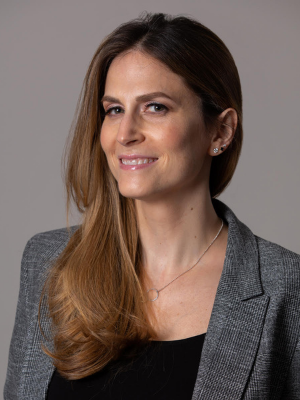 Gut instinct – that instinctual sense of knowing that does not come from conscious reasoning, also sometimes called intuition – is one aspect of your decision-making that is worth better understanding – including how and when to leverage it. Here are seven things to know about gut instinct.
Gut instinct – that instinctual sense of knowing that does not come from conscious reasoning, also sometimes called intuition – is one aspect of your decision-making that is worth better understanding – including how and when to leverage it. Here are seven things to know about gut instinct.
- The gut truly is the “second brain.” – A neural network of 100 million neurons line your digestive tract, evidencing the gut’s processing ability. The gut has more neurons than the spine. It’s not only the stomach that has a brain, but the heart also has neural cells – there’s more to processing than we “think.” According to Sarah Garfinkel, professor and cognitive neuroscientist at University College London, “Instinct is when physiological signals change quickly in response to different stimuli, with or without the conscious awareness of the properties of those stimuli. A capacity to tap into and be guided by those signals gives us a route to gut instinct, which bypasses higher-order awareness mechanisms that don’t yet have access to that information.”
- Gut instinct is not a mind “or” body thing, and it’s complicated. – When considering a decision, the brain works in tandem with the gut, making intuition a mix of emotional and experiential data as the brain accesses memories, preferences, needs, past learnings and more. The mind-body dualistic idea that suggests mind and body responses are separate has long been disproven. They are interrelated. We feel in the body the result of cognitive processing happening in the brain. As a predictive processing network, the brain seeks to quickly compare sensory information with past experience, knowledge and memories, sending signals to the gut. These rapid assessments are subject to error, due to things like confirmation bias where we scramble to see what we already believe true or when we impose past circumstances upon a current situation and perceive danger.
- Gut instinct is often a valuable part of decision-making. Partnering gut feelings with analytical thinking leads to better, faster, and more accurate decisions and increases the confidence behind your choices – especially when there is no “correct” and clear-cut option and you’re overthinking. The majority of top executives report that they leverage feelings when managing crises. Women often speak to The Glass Hammer about their ability to read the room as way of informing how they approach a meeting or having gut instinct around an idea that comes up. And when, for example, you are in a familiar setting or with a familiar person, your intuition can pick up subtle cues that something is off or amiss by noticing indicators that are not usually present. It can also guide you against making a wrong choice that presents unnecessary risk. Without gut instinct, and a sensitivity to somatic cues, we can fall into analysis paralysis.
- Gut instinct is NOT such a good indicator for decision-making at other times – such as in hiring and recruitment. A clear example for where gut instinct should not be trusted in decision making is in hiring and recruitment, when guts instincts (fast thinking) around the “right candidate” and “culture fit” or “likability” are usually just unconscious bias (such as affinity bias, anchoring bias) – especially related to race, disability, gender and sex. Within seconds of hearing speech, Yale found that we make snap perceptions on social class (based on speech patterns such as pronunciation), competence and pay package. We also like people who are like us in tone, body movements and word choices – and the things we like cast a positive halo over the rest of the interview. Assessments from unstructured and organic interviews, where managers go with their gut, have very poor correlation with job effectiveness and finding the most qualified candidate, because unconscious bias is rife and gut instinct is often rationalized.
- The quality of gut instinct is interrelated to emotional intelligence. Research has shown that people with lower EI tend to misread their own bodily signal and somatic cues, misinterpreting the warnings of intuition that would normally guide us against bad risk-taking and decision making. But just as emotional intelligence can be strengthened through intentional training, as we become more sensitive to our ability to read and discern different emotions, where they are coming from and how they influence us, so can we develop our gut instinct. Discerning fear from intuition is an important part of honing our ability to use gut instinct in decision making, as these can often be confused. People who are highly sensitive – and perceive, process, and synthesize information more deeply – often have stronger intuition but may also have learned to distrust and invalidate this strength. Like a muscle, intuition can be built up. Practicing using it through fast, decisive actions on relatively inconsequential matters to build up trust and your ability to emotional regulate through discomfort. By role-playing the outcomes of different decisions, you can also see if your intuitive-based decisions would be aligned with your highest values on the other side.
- Distraction from overthinking helps our intuition to weigh in on decisions. When processing a lot of complex and difficult to remember information around a big decision, the tendency can be to painfully overthink – going between all the pros and cons – or to make a snap decision to escape the pain of indecision. But research has found that there’s a value in allowing our minds to wander in unrelated activity, as the unconscious mind helps to sort through the seeds. Participants who were distracted by an unrelated activity after being presented with a bunch of information about a decision made better (and more intuitive led) objective choices than those who consciously weighed up options before making a final decision. Overthinking in a strictly analytical way can muddy your judgement. But in the pause, the unconscious mind can help to surface the gist from the information overload and improve the accuracy of intuitive judgement.
- Timing and context is critical and most people don’t know when to use their gut instinct. Because it’s intertwined with many other rapid processes happening in the brain (triggering, bias, memory), it’s critical to assess when to rely on gut instinct in decision-making and when not to, and most business leaders do not know the difference – not only that, but it’s the same for most doctors, therapists and other kinds of professionals.
All in all, gut instinct is a valuable aspect of processing that is bound to contribute it’s voice into your decision-making, whether you are going with it, weighing it up or fighting against it. The more you can learn about gut instinct, the more you’ll be equipped as a leader to use it – and not use it – wisely.
By Aimee Hansen


